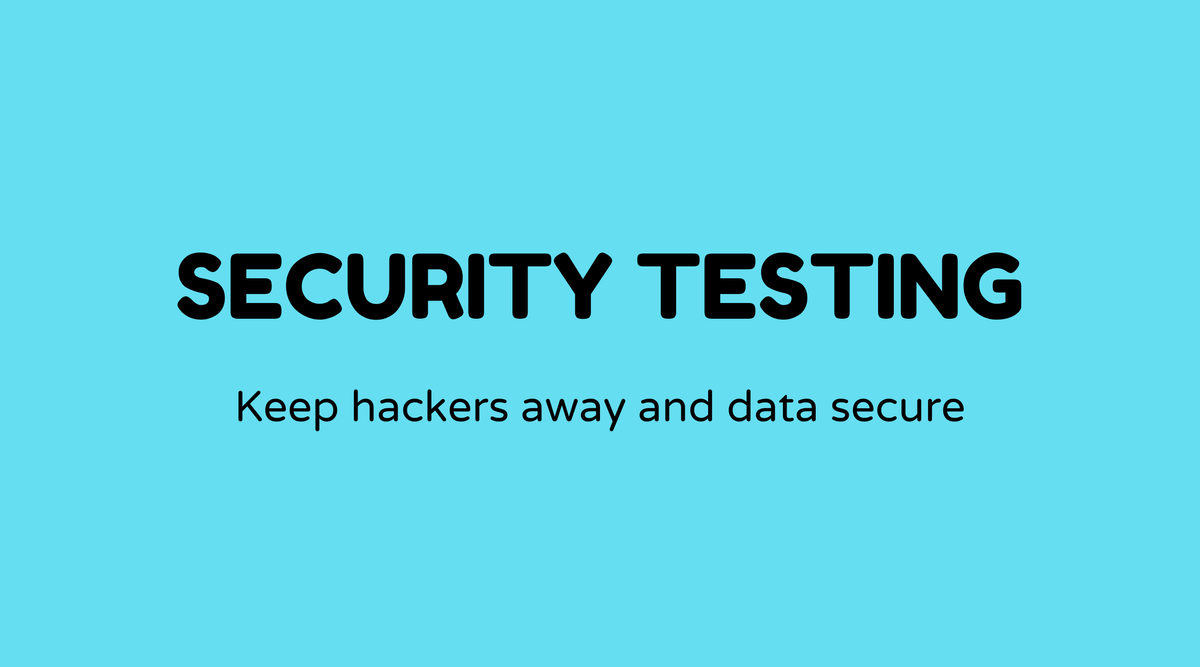Security testing

Overview of Security Testing:
Security testing is vital in today's digital landscape, where data breaches and cyber-attacks pose significant threats. It ensures that software, applications, and network systems are protected against vulnerabilities and unauthorized access. The goal? To pinpoint weaknesses before they are exploited.
By simulating attacks and evaluating the resilience of IT infrastructure, security testing safeguards sensitive data and upholds the trust of users. This article provides an overview of security testing, explains its importance, and offers guidance on how to begin.
Why Security Testing Matters:
In an age where data has immense value, safeguarding it is essential. Security testing assists in detecting potential vulnerabilities that hackers might take advantage of. Ignoring security concerns can lead to serious consequences, ranging from financial losses to damage to reputation.
Additionally, regulations such as GDPR and HIPAA require stringent security measures. Non-compliance can result in significant fines. Thus, beyond simple compliance, security testing focuses on creating solid systems that users can trust while ensuring business continuity.
What is Security Testing:
So, what is security testing? It is a procedure aimed at identifying flaws in the security mechanisms of an information system. The goal is to ensure that software applications and systems are devoid of loopholes that attackers could exploit for harmful purposes.
Security testing includes a variety of practices, such as vulnerability assessments, penetration testing, and risk assessments. It’s not just about identifying bugs; it also involves evaluating the overall security stance of the organization.
How to Perform Security Testing:
Starting with security testing may seem overwhelming, but it can be straightforward. Here’s a simple roadmap:
-
Identify Objectives: Understand what you’re protecting and why. This establishes clear goals for your testing efforts.
-
Select Tools and Techniques: Based on your needs, choose tools that focus on penetration testing, vulnerability scanning, or risk assessment.
-
Conduct Testing: With tools ready, simulate attacks on your system. Test various scenarios to reveal concealed vulnerabilities.
-
Analyze Results: Collect data, review findings, and assess their impact on your security position.
-
Remediation Plan: Prioritize vulnerabilities and develop an action plan to tackle them.
-
Continuous Monitoring: Security is not a one-time process. Regular monitoring and periodic testing provide ongoing protection.
Examples of Security Testing:
-
Penetration Testing: Ethical hackers simulate attacks to reveal vulnerabilities. It’s like having someone check your security by attempting to breach it before malicious actors can.
-
Vulnerability Scanning: Software tools scan systems for known weaknesses. It’s akin to conducting a health check-up for your system.
-
Risk Assessment: Evaluating potential risks and deciding how to address them enhances decision-making.
-
Security Audits: These systematic evaluations confirm compliance with security protocols and assess their effectiveness.
FAQs
What's the distinction between penetration testing and vulnerability scanning?
Penetration testing involves ethical hackers actively attempting to exploit vulnerabilities, while vulnerability scanning uses software tools to identify known weaknesses.
How often should I carry out security testing?
Regularly scheduled security tests, at least annually, or more frequently for high-risk systems, are advisable.
Is security testing necessary for small businesses?
Definitely! Small businesses may face vulnerabilities more acutely due to limited resources, making security testing essential.
Can security testing substitute for my antivirus software?
No, security testing identifies vulnerabilities, whereas antivirus software defends against known malware.
What is the first step in initiating security testing?
Define your security objectives. Understanding what needs protection guides the entire testing process.
What are some widely used security testing tools?
Tools like OWASP ZAP, Burp Suite, Nessus, and Metasploit are popular choices.
For more comprehensive insights, check out OWASP's official page or visit NIST.
or ISO/IEC standards on information safety.
Investigating security testing not only facilitates compliance but also provides reassurance that your data is secure.



